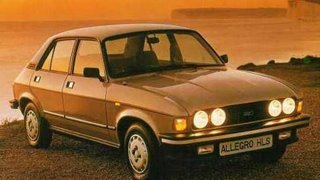When the ink was dry on the 1968 merger which created, for better or worse, British Leyland, the company was left with a plethora of engines, some relatively new, some ancient and some still under development. The process of rationalising the range was painfully slow, and we had to wait until 1978 for the first new engines, the Austin-Morris O-Series four, and the Rover sixes to appear.
A few opportunities slipped the net, usually for reasons of internal politics rather than technical feasibility. One such was the V6 based on the Jaguar V12. Given the nature of the V12, a 'half-length' engine would have designed itself, and would have been a far better power unit for the lower-end XJ6 than the woeful 2.8 litre XK.
Surprisingly, it was engineering conservatism which seems to have prevented the original Jaguar V6 from being produced. Jeff Daniels' "Jaguar - The Engineering Story" records "at that time V6s were thin on the ground, and those that existed were not, if one excepts* Lancia's pioneering masterpiece for the Aurelia, particularly inspiring". 5ivegears suspects snobbery too - what's good enough for a Zephyr or Capri had no place under the bonnet of a Jag. (If that isn't irony...)
The V6 wouldn't have solved the problem of replacing the XK, but it have been put into production at very little cost in capital or development time and would have given much needed employment to the chronically under-utilised V12 production equipment.
The V6 could have had applications in other BL products. This alone might have given the men at Browns Lane reason enough to keep the cupboard locked - Jeff Daniels' excellent book also states, referring to the adopton of the 77mm Rover gearbox for the XJ Series III that "From Jaguar's point of view this must have been the only worthwhile thing that ever came out of British Leyland".
*5ivegears would also except the various Ferrari Dino V6s made in 60 and 120 degree configurations.








